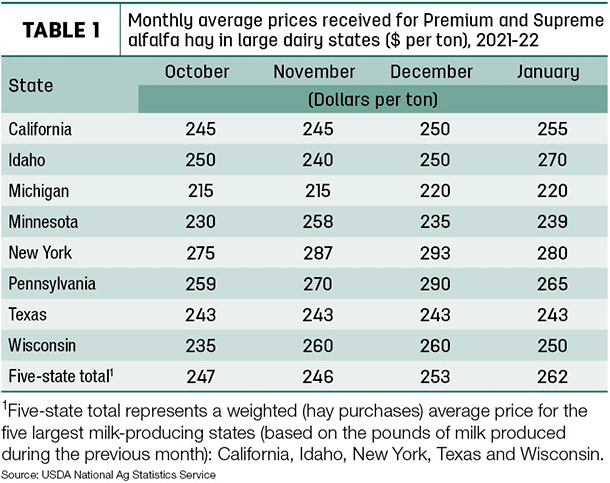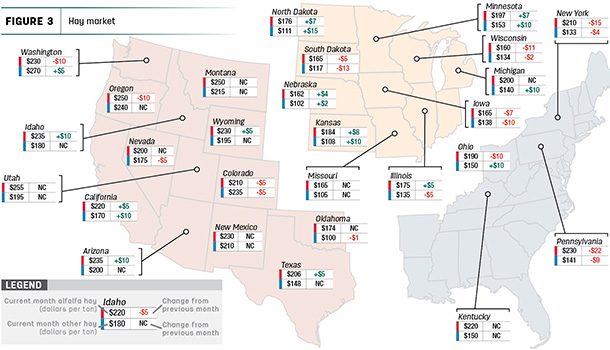Agricultural producer financial sentiment continues to fluctuate month to month, with higher input costs a leading concern, according to the monthly Purdue University/CME Group Ag Economy Barometer survey.
While a majority of survey respondents still consider input costs as their No. 1 concern (47%), it was followed by lower output prices (16%), environmental policy (13%), farm policy (9%), climate policy (8%) and COVID-19’s impact (7%).
Tight machinery inventories continue to be a problem. In February, 40% of producers stated that low farm machinery inventories are holding back their investment plans. While plans for farm building and grain bin construction were more optimistic, 56% still said their plans for new construction are below the previous year.
The Ag Economy Barometer provides a monthly snapshot of farmer sentiment regarding the state of the agricultural economy. The survey collects responses from 400 producers whose annual market value of production is equal to or exceeds $500,000. Latest survey results, reflect ag producer outlooks as of Feb. 14-18.
Drought conditions worsen
As growing season nears, U.S. Drought Monitor maps indicate worsening conditions over the past month. As of March 1, about 50% of U.S. hay-producing acreage (Figure 1) was considered under drought conditions, up 6% from a month earlier. The area of drought-impacted alfalfa acreage (Figure 2) increased 9% to 66%.


Hay prices mostly higher
January’s average hay prices continued to reflect regional drought-related production shortcomings in 2021. Price data for 27 major hay-producing states is mapped in Figure 3, illustrating the most recent monthly average price and one-month change. The lag in USDA price reports and price averaging across several quality grades of hay may not always capture current markets, so check individual market reports elsewhere in Progressive Forage.
Click here or on the map above to view it at full size in a new window.
Dairy hay
January’s average price for Premium and Supreme alfalfa hay in the top milk-producing states jumped another $9 from December to $262 per ton (Table 1), the highest monthly average since the USDA began tracking those prices in 2019. Largest monthly price increases were in Idaho. Elsewhere, prices were up moderately in California and Minnesota, steady in Michigan and Texas and lower in New York, Pennsylvania and Wisconsin.
January 2022’s average was up $56 per ton from a year ago and above the 2021 annual average of $230 per ton.

Alfalfa
Despite the increase in the national average price for dairy-quality hay, the average price for all alfalfa hay decreased $2 in January to $211 per ton. Monthly prices increased in 10 of 27 major forage states, with double-digit increases in Arizona and Idaho. Monthly average prices decreased in 10 states, led by double-digit declines in Pennsylvania, New York, Wisconsin, Ohio, Oregon and Washington.
Year-over-year price changes were again noteworthy. Montana alfalfa hay prices were up $115 per ton compared to January 2021. Prices in eight other Western states were up $50-$78 per ton.
Other hay
The U.S. average price for other hay also dipped $2 in January to $144 per ton. Compared to December, average prices moved higher in eight of 27 major hay-producing states, with the largest increase in North Dakota. Prices for other hay were lower in 10 states, led by Pennsylvania and New York.
Year-over-year average prices for other hay were substantially higher in Northern tier and Western states, up $95 and $100 per ton in Washington and Montana, respectively, and $60-$72 in Utah, Oregon and Minnesota.
Export report coming
The USDA’s January hay export estimates were released after Progressive Forage’s online deadline. Check back for an update.
Regional markets
Here’s a snapshot of regional markets during the first week of March:
- Southwest: In Texas, hay prices were mostly firm to $5 higher in all regions. Hay demand picked up, but truck shortages and increased freight costs by as much as 25% have put a strain on moving hay and increased prices. As producers get ready to prep fields and begin planting for next year, inflation is on their minds both in the form of trucking and inputs needed to put up a quality crop. As a result, some producers are considering growing less forages for this upcoming year to try to manage the increase in input prices and the difficulty finding trucking on the back side of the production. There is still a lot of higher-quality hay moving into the state from Colorado, Kansas and Nebraska.
In Oklahoma, lack of moisture was pressuring both activity and prices higher.
In California, trade activity and demand were moderate. Retail hay prices were steady with tight supplies. Dairy hay prices were steady. Alfalfa producers reported aphid pressure earlier than usual due to the mild winter weather. Some growers began irrigating their fields. Rangeland grass continued to grow, but some producers said the grass was not growing as fast as livestock was grazing it down. Forage quality was expected to decline unless significant rain is received soon.
- Northwest: In Montana, hay movement was slow to moderate; interest remains good as supplies of hay remained tight. Producers are discussing at what price levels they want to contract hay for this summer: $200 per ton was a common price most producers and ranchers threw out, but no one has established any contract sales yet. Many producers are looking at other grain prices and are debating switching fields to wheat or barley instead of alfalfa this spring. Producers are concerned with current fuel prices and being able to deliver hay at an affordable cost going forward. Freight rates are currently hovering around $6-$7.50 per loaded mile depending on the size of the load. Drought concerns continue to be another factor weighing on both ranchers and producers.
In Idaho, old-crop alfalfa sold firm in a light test. First sales of new crop export hay were reported: Contracts require 50% down and includes all cuttings clean and green export quality. Domestic trade remains slow with continued good demand as milk prices increase. More snow is needed; snowpack levels in the Teton mountain range were reported at 70%.
In Colorado, activity was light to moderate on good demand for horse, feedlot and dairy hay markets. The bulk of trades went to stable and retail markets.
In the Columbia Basin, export and retail hay sold steady; domestic hay supplies remain tight, and trade remained slow.
An atmospheric river brought a dramatic end to the unusually dry winter weather in the Pacific Northwest. The Cascades, Olympics and Coast mountains received over 10 inches of precipitation, and many new rainfall records were reported.
In Wyoming, all reported forge products sold steady. Demand and buyer inquiry was good. Contacts in the western side of the state were sold out of hay and continued to wait for trucks to pick up hay; livestock owners continue to look for hay to procure. Few contacts in the eastern side of the state had big squares to sell and these loads are going to Montana, western Wyoming and some into Colorado.
- Midwest: In Nebraska, all reported hay products sold steady. Demand and buyer inquiry was good. Some cattlemen were inquiring about available forage resources. Some farmers turned pivots on wheat and rye across some areas of the state along with some watering alfalfa. In the panhandle, large squares were still going to out-of-state buyers in Montana, western Wyoming and Colorado.
In Kansas, prices remained steady for alfalfa and grass hay; movement remained slow although producers reported receiving more inquiries from people wanting to buy. The hay market seemed to be in a time of “unpredictable uncertainty” with so many factors affecting the market.
In South Dakota, all classes of hay sold steady. Good demand remained for all types and qualities of forage, yet the market activity slowed considerably. Most of the state remained without any snow cover. Hay supplies are very limited across the state.
In Missouri, frost was leaving the ground, making for a lot of mud. Some farmers were foregoing fertilizer applications on pastures due to the extremely high prices. However, for those truly in the business of making hay, this becomes a much less viable option. Hay supplies are moderate, demand is light to moderate, and hay prices were mostly steady.
In Iowa, demand and buyer interest was good.
In Wisconsin, prices were strong for dairy-quality hay.
- East: In Pennsylvania, alfalfa and alfalfa-grass mix hay sold firm. Buyer attendance and demand was moderate for a heavy sale supply.
In Alabama, hay prices were steady with light supply and good demand.
Other things we’re seeing
- Dairy: At $24.40 per hundredweight (cwt), January’s U.S. average milk price jumped to an eight-year high, outpacing rising corn, soybean and hay costs to provide the largest income over feed cost margin in 14 months.
Supporting milk prices, declining cow numbers and receding milk production per cow pulled January 2022 U.S. milk production below year-ago levels for a third consecutive month. U.S. cow numbers declined for an eighth consecutive month and are now the lowest since June 2020.
Among major dairy states, January 2022 year-over-year milk production was down in 19 states, led by declines in New Mexico, California and Washington. Leading growth areas were South Dakota and Texas.
-
Fuel: At the beginning of March, the U.S. regular gasoline retail price averaged $3.61 per gallon, about 90 cents higher than a year earlier; the U.S. average on-highway diesel fuel price was $4.10 per gallon, up $1.03.
- Trucking: At $3.24 per mile, national average spot flatbed hauling rates rose to start March. Regionally, rates hit $3.55 per mile in the Midwest, according to DAT Trendlines. Elsewhere, rates averaged $3.22 in the Southeast, $3.23 in the Northeast, $2.85 in the West and $3.01 per mile in an area covering Texas and adjacent states.











